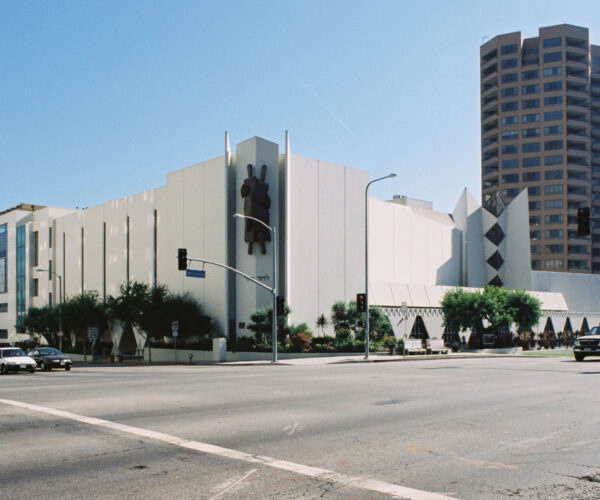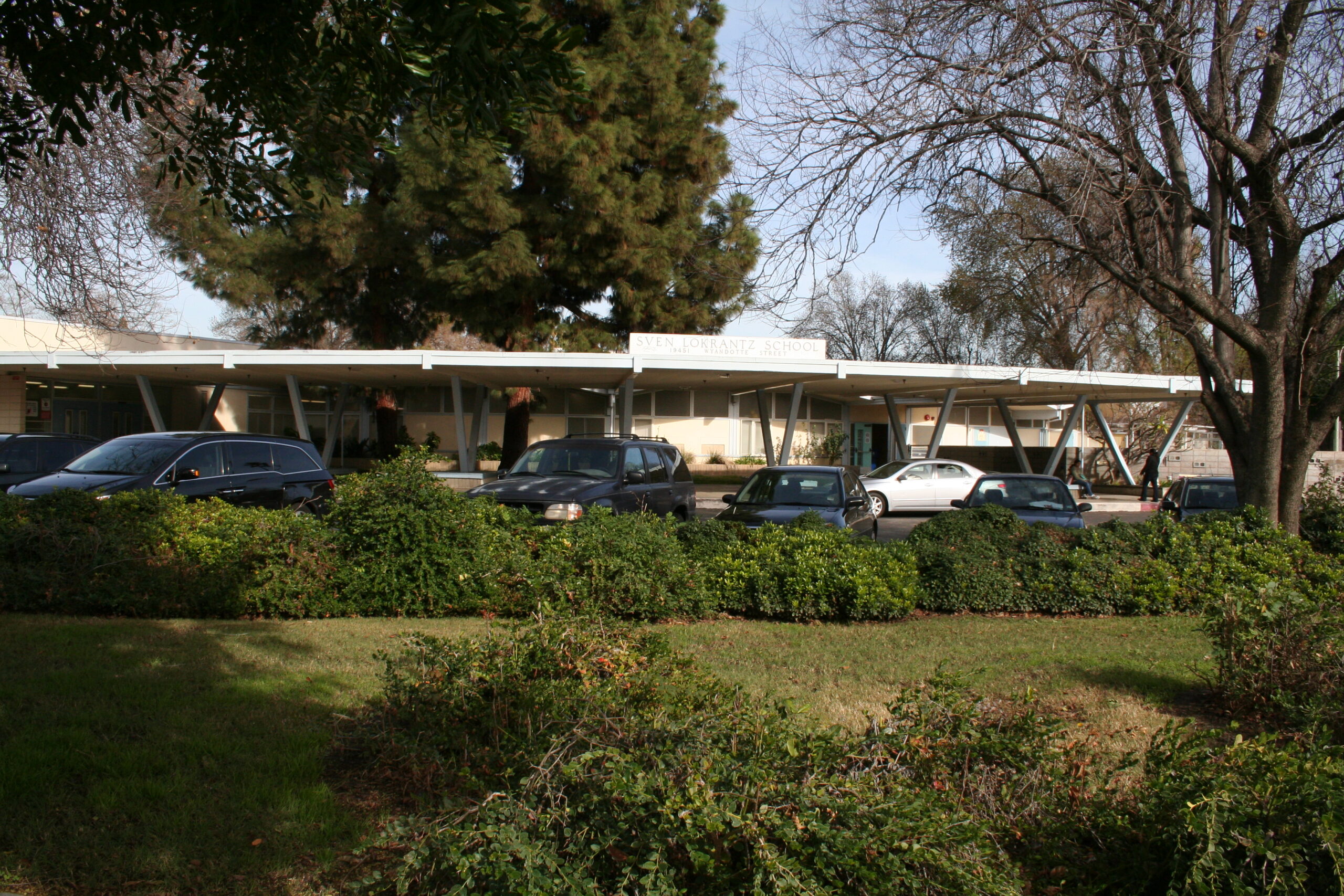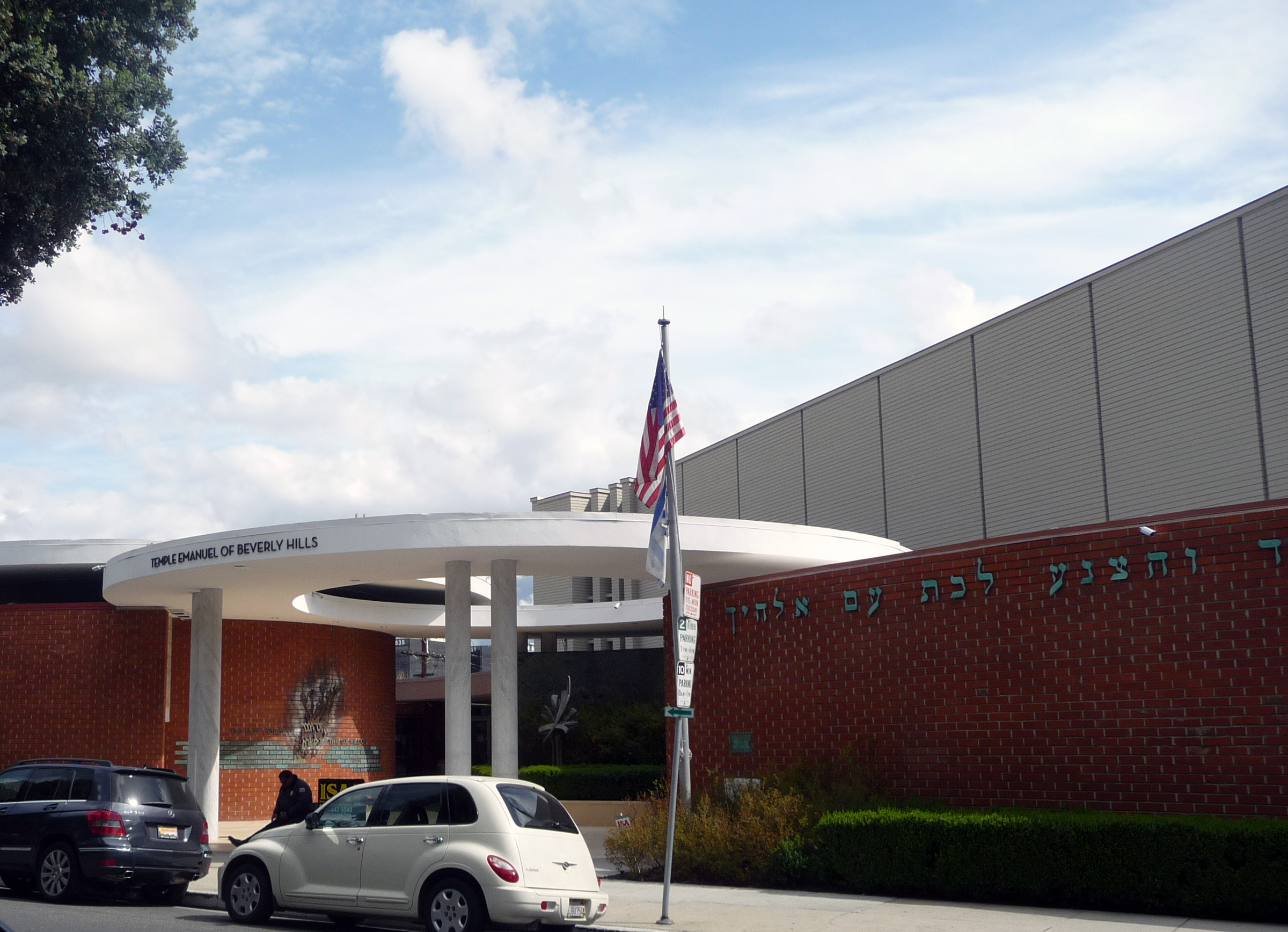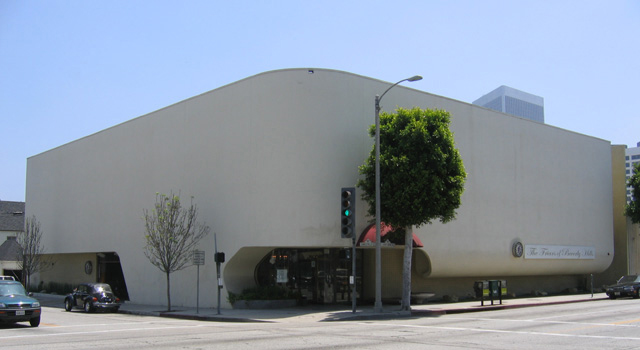Architect
Sidney Eisenshtat
Sidney Eisenshtat, FAIA (1914-2004)
Sidney Eisenshtat was a renowned L.A. architect perhaps best known for his innovative designs for Modern synagogues.
Born in 1914 in New Haven, Connecticut, Eisenshtat came to Los Angeles in 1926. He graduated from USC’s School of Architecture in 1935 and completed his first Los Angeles project, Mrs. Reich’s Noodle Company, in 1938.
He then joined Arthur Froehlich and Associates, a Beverly Hills architecture firm that specialized in racetracks, including Hollywood Park. He also worked for the Department of Defense and dabbled in tract home development before establishing his own firm.
Inspired by early Modernists, Eisenshtat designed his first synagogue, Temple Emanuel in Beverly Hills, in 1951. Several years later, he was commissioned to design Sinai Temple in Westwood. Completed in 1960, Sinai Temple is a magnificent statement in Expressionist design, full of color, rhythm, and dramatic angles.
An observant Orthodox Jew, Eisenshtat had a deeply personal connection to the Jewish facilities he designed. Eisenshtat perceived synagogues with a horizontal orientation and favored a minimalist aesthetic. He combined large, unadorned, white-walled interior spaces with thin slab concrete or brick exteriors and incorporated natural light and natural materials.
He also designed Jewish educational buildings and community centers, as well as synagogues across the U.S. His other religious structures in Southern California include Knox Presbyterian Church in Los Angeles and House of the Book in Simi Valley.
Eisenshtat’s commercial buildings included two significant structures in Beverly Hills, the Union Bank Building and the Friars Club (now demolished).
A committed advocate for education, he created innovative schools such as the Lokrantz School in Reseda for special needs children. Eisenshtat called it the “Happy School,” aiming to make navigation and use of its spaces a pleasant experience that avoided the sometimes prison-like experience of public schools.
After a long and prolific career, Eisenshtat retired in the 1980s. He passed away in 2004 at the age of 90.
Related Places
-

Place
Sinai Temple
-

Place
Lokrantz School
-

Place
Temple Emanuel
-

Place
Friars Club Building (Demolished)